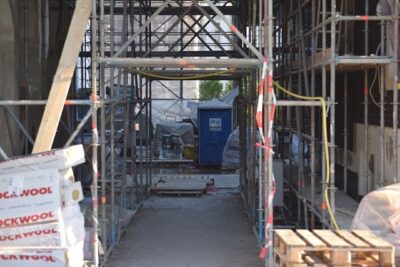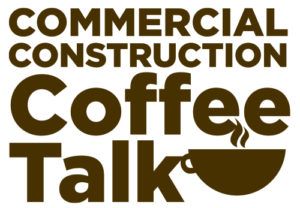Construction projects need suitable toilet facilities to ensure worker comfort and adhere to compliance standards which influences productivity outcomes.
The correct portable toilet options at construction sites can significantly boost site productivity while improving worker satisfaction. Which portable toilet solution meets the specific requirements of your construction project?
This comprehensive guide explains how to hire portable toilets for construction sites in New Zealand with details on necessary regulations and practical tips to avoid future complications.
What’s Inside
- Why Construction Sites Need Portable Toilets
- Key Regulations You Can’t Ignore
- Types of Portable Toilets for Construction
- How Many Units Do You Need?
- Placement Considerations
- Maintenance Requirements
- Budgeting Tips
Why Construction Sites Need Portable Toilets
Every construction site must have adequate sanitation facilities as a compulsory standard. Portable toilets provide multiple benefits which go beyond just meeting compliance standards.
Portable toilets are essential for keeping construction sites operational.
- Construction sites suffer productivity losses when workers must find facilities outside the worksite. On-site toilet facilities enable workers to conserve 30 minutes every workday.
- The Health and Safety at Work Act in New Zealand requires construction sites to have adequate toilet facilities. Non-compliance can result in hefty fines.
- Providing high-standard facilities demonstrates your dedication to your workforce’s well-being and joy. Quality facilities show employees appreciation which bolsters their morale and helps retain them.
The requirement for adequate on-site toilet facilities through regulations increases the need for portable toilets. This trend continues to grow because of the construction activity revival.
Key Regulations You Can’t Ignore
Businesses face difficult navigation challenges when dealing with construction site sanitation regulations. Here’s what you need to know:
- Employers must provide “adequate and accessible” toilet facilities for their employees according to WorkSafe NZ’s interpretation of the Health and Safety at Work Act.
- Local councils can impose specific regulations which vary according to the scale of the project and its urban location.
- Workplace facilities must be accessible to every employee regardless of disability status.
- The law requires facilities to provide sufficient privacy when both genders work together on a project site.
Non-compliance results in consequences that surpass financial penalties because it leads to project delays and reduced worker productivity along with damage to your company’s reputation.
Types of Portable Toilets for Construction
Choosing the right kind of portable toilet plays a crucial role in determining your construction site’s efficiency. Here are your main options:
- Standard Portable Toilets remain the most popular and economical selection available for portable sanitation needs. The basic model offers both toilet and urinal functionality along with hand sanitizer stations.
- Flushing Portable Toilets deliver improved comfort using their flushing systems and often include handwashing stations.
- Portable toilet blocks that contain multiple toilets within one structure offer larger sites space savings and enhanced facilities.
- Accessible portable toilets offer additional rooms with handrails and wheelchair access features for disabled users.
The industry segmentation encompasses standard portable toilets, luxury and trailer rentals and waste collection services. Standard portable toilets maintain market dominance through their combination of budget-friendly pricing and easy-to-use features.
How Many Units Do You Need?
When renting portable toilets the most common mistake is ordering too few units. Organizations face line-ups and employee dissatisfaction as well as compliance issues when they do not rent enough portable toilets. Here’s how to calculate your needs:
- Extended projects usually need a greater number of portable toilet units compared to shorter projects.
- Large sites typically need portable toilet units distributed across different locations.
- Mixed gender workforces need separate toilet facilities.
- Shift patterns (multiple shifts might share facilities)
- The busiest periods during lunch breaks and staff transitions demand maximum usage which necessitates strategic preparations.
Lack of proper need assessment leads to additional costs through reduced productivity and worker dissatisfaction.
Placement Considerations
You need to carefully choose the location of portable toilets because their functionality depends as much on where they are placed as on how many you provide. Correct placement of portable toilets improves their utilization and upkeep and increases overall site performance.
Consider these placement factors:
- Workers must have access to facilities within a 150-meter walking distance. For larger sites, distribute units accordingly.
- Install portable toilet units on flat ground that stays stable to prevent tipping and movement.
- Service trucks need clear and open paths to conduct regular maintenance activities.
- Select placements for units that offer convenience but maintain privacy by keeping them distant from high-traffic areas and eating spaces.
- Exposed location unit placements require analysis of their capacity to withstand strong winds and heavy rain.
Proper positioning maintains both operational efficiency and cleanliness across your site while providing more than simple convenience.
Maintenance Requirements
All portable toilets need maintenance to stay operational because even premium models will experience problems. Facilities need to be regularly serviced to ensure hygiene standards are met and workers remain satisfied while fulfilling compliance requirements.
Here’s what an effective maintenance program includes:
- Waste removal and cleaning together with supply restocking make up the standard maintenance procedure. The frequency of servicing portable toilets varies based on their usage rate.
- High-usage sites: Daily or twice-weekly servicing
- Standard sites: Weekly servicing
- Low-usage sites: Bi-weekly servicing
- Ensure your hire contract specifies emergency callout provisions for servicing units outside the normal maintenance routine.
- Assign one person to make quick daily checks of toilet paper supplies and hand sanitizer and to identify visible issues.
The market for portable toilets worldwide shows strong expansion and forecasts reaching a compound annual growth rate of 7.3% between 2023 and 2032. Portable toilet market expansion results from increased demand at construction sites and outdoor events.
Cost Factors and Budgeting Tips
Precise knowledge of portable toilet rental costs helps businesses maintain effective budgets and avoid unexpected financial expenses. Here’s what affects your bottom line:
- The base rental fees operate on weekly or monthly schedules but vary due to multiple influencing factors.
- Standard units offer the most affordable rental prices compared to specialty units which demand higher rental rates.
- Number of units (volume discounts may apply)
- Extended rental durations create opportunities for improved pricing deals.
- The rental agreement can either incorporate standard servicing or charge it separately. More frequent servicing will increase costs.
- Remote locations can lead to significant delivery and pickup fees.
Budgeting Tips:
- Long-term equipment rentals offer more economic advantages compared to their short-term rental counterparts.
- Investigate all ownership costs rather than concentrating exclusively on weekly rental rates.
- The ROI calculation should account for productivity gains that come from proper facilities.
Hidden costs emerge when toilet facilities are minimized because it reduces worker productivity and increases dissatisfaction.
Environmental Impact
The choices you make for portable toilet solutions directly affect how your construction site impacts the environment.
Consider these eco-friendly approaches:
- When selecting your unit choose one that minimizes water usage but still ensures adequate hygiene standards.
- Choose service providers that implement green cleaning agents for making responsible environmental chemical decisions.
- Confirm that your waste disposal provider follows the correct waste disposal procedures.
Portable toilets became critical facilities during New Zealand events including the 2011 Christchurch earthquake which damaged sewer systems.
The Bottom Line
A healthy workplace boosts productivity and shows team respect through appropriate portable toilet solutions that exceed basic regulatory requirements.
Remember these key points:
- Ensure full compliance with all regulations from the initial stage.
- Your evaluation of needs should include both worker numbers and site-specific conditions.
- Choose portable toilet units that align with the particular requirements of your project
- Place units strategically throughout your site
- Maintain regular servicing schedules
Focusing on sanitation requirements at your site leads to enhanced project flow and greater worker satisfaction. Construction businesses in today’s competitive market would make a critical mistake by overlooking this advantage.
Collaborate with specialists who understand the specific needs of New Zealand construction sites.





























